KPI - Abnormalities
Notification settings
No. of consecutive positive abnormalities
This setting is used to define the number of consecutive positive abnormalities required to trigger notifications (Email/SMS/In-App) to the user.
For e.g. - the admin sets Consecutive positive abnormalities to 3. Then, if the system detects 3 consecutive positive abnormalities for a KPI, then a notification is triggered to all the stakeholders (Primary owner, Supervisor & Viewers) of the KPI.
No. of consecutive negative abnormalities
This setting is used to define the number of consecutive negative abnormalities required to trigger notifications (Email/SMS/In-App) to the user.
For e.g. - the admin sets Consecutive negative abnormalities to 2. Then, if the system detects 2 consecutive negative abnormalities for a KPI, then a notification is triggered to all the stakeholders (Primary owner, Supervisor & Viewers) of the KPI.
No. of abnormalities:
This setting is used to define the total number of consecutive abnormalities (can be positive or negative) required to trigger notifications (Email/SMS/In-App) to the user.
For e.g. the admin sets Consecutive abnormalities to 5. Then, if the system detects 5 consecutive abnormalities for a KPI, then a notification is triggered to all the stakeholders (Primary owner, Supervisor & Viewers) of the KPI.
The 5 abnormalities here can be:
Only positive abnormalities
Only negative abnormalities
Combination of positive and negative abnormalities.
Abnormality Type
4E allows you to define types of process abnormalities, so it is possible to categorize and report on them
We ask 4E admins to define such abnormality types as granularly as possible, to study the effect of process modifications better
Categories of abnormalities when captured allow deductions-based data that is provided for process deviation
By default, 4E provides three types of abnormalities
Safety
Quality
5S, as per TPM nomenclature, (Sort, Set in Order, Shine, Standardize, and Sustain)
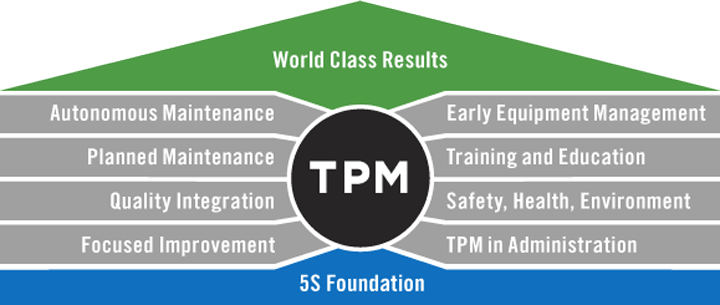
4E admins can manage the existing abnormality types
Add Abnormality type
Click on the '+' button on the card header,
'+' button on the card header
Enter the abnormality type and click on the tick button to save
Abnormality gets saved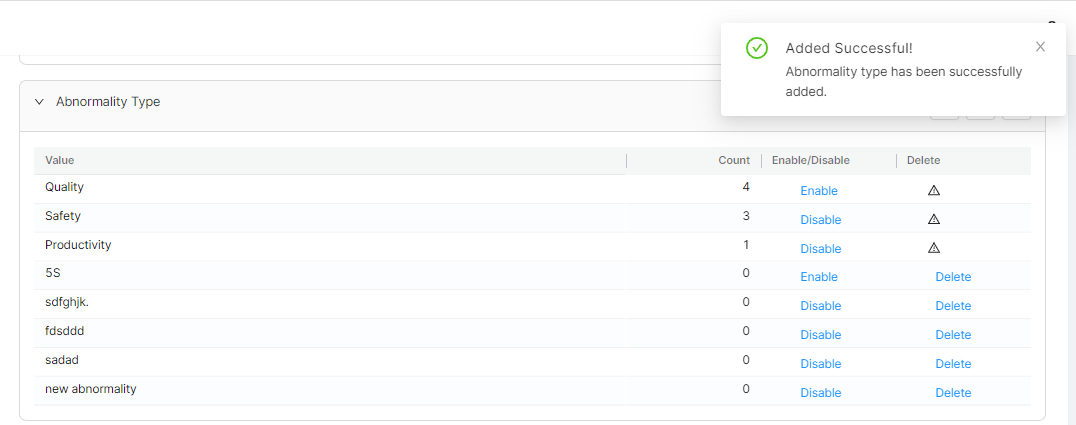
Edit existing abnormality
Double-click on the abnormality you want to edit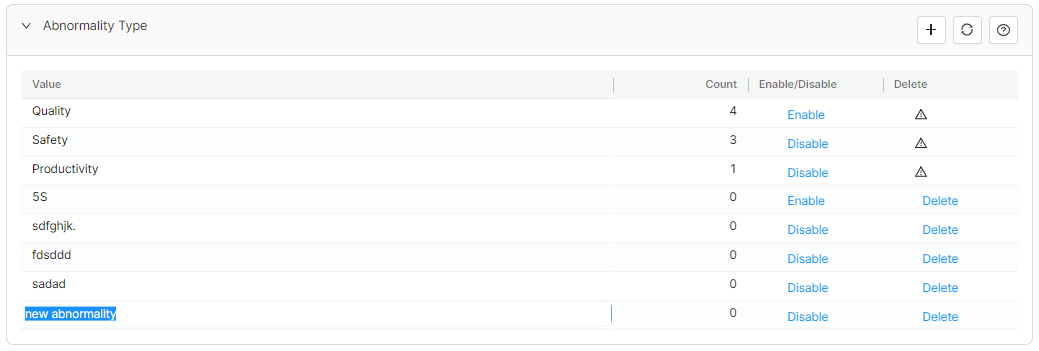
Double-click makes the value editable
Update the abnormality type and press enter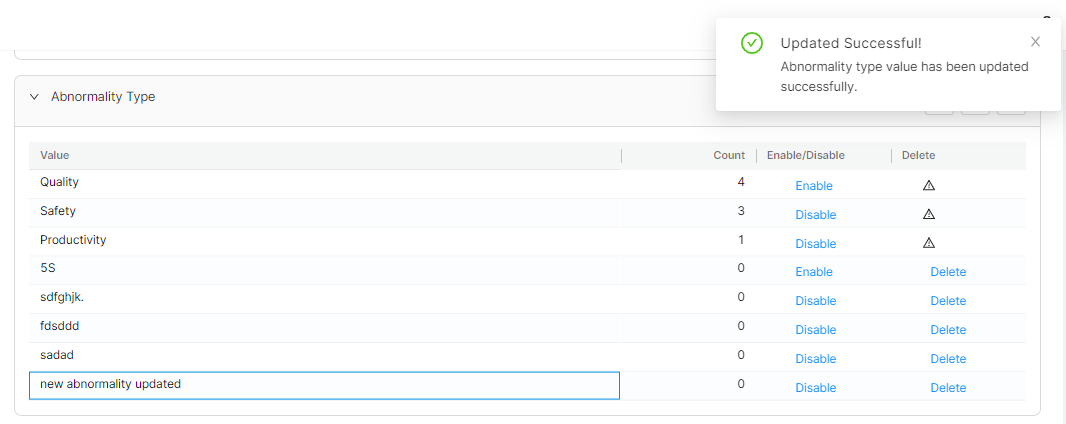
Pressing enter will save the changes
Enable/Disable: If an Abnormality type is disabled, it will not be available for future use. However, the existing Process Abnormalities will still contain the disabled Abnormality type. If an Abnormality is enabled, it is displayed while creating the Process Abnormalities.
Admin can enable/disable the Abnormality type by just clicking against the enable/disable under the enable/disable column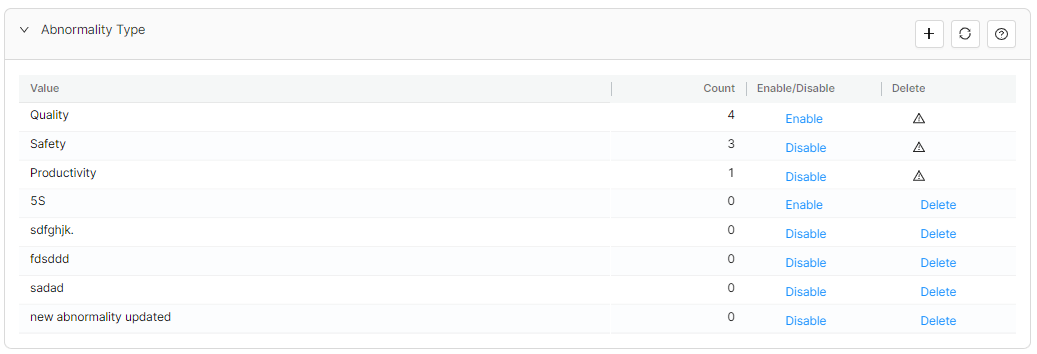
Delete: 4E Admins can also delete the Abnormality type by clicking ‘Delete’ under the delete column. However, if the Abnormality type is already in use then, the delete option is not available
Abnormality cause (SOP followed)
While adding analysis for KPI’s performance, users can select an Abnormality cause when SOP was followed. This list of Abnormality causes is managed in this section.
4E allows you to define the Abnormality causes and associated codes where SOP was followed.
Department - Department(s) with which cause code needs to be associated
Cause code - A small code associated with the cause
Cause - A small description of the cause
Admin can manage the existing Abnormality Causes

Add Abnormality cause
Enter the Abnormality code and cause in the respective text fields and
Click on the '+' button to save the record and capture the department, abnormality code and cause. Once done click on the Tick button to save.
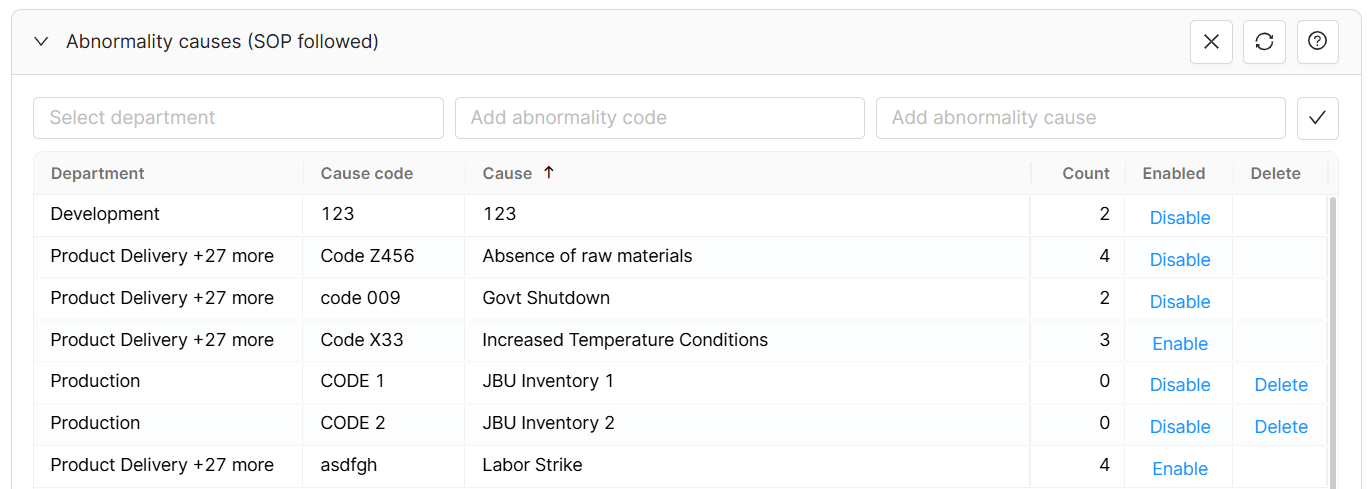
Edit Abnormality Cause
Double-click on the abnormality you want to edit, this will make the required cell editable

Update the Abnormality type and press enter
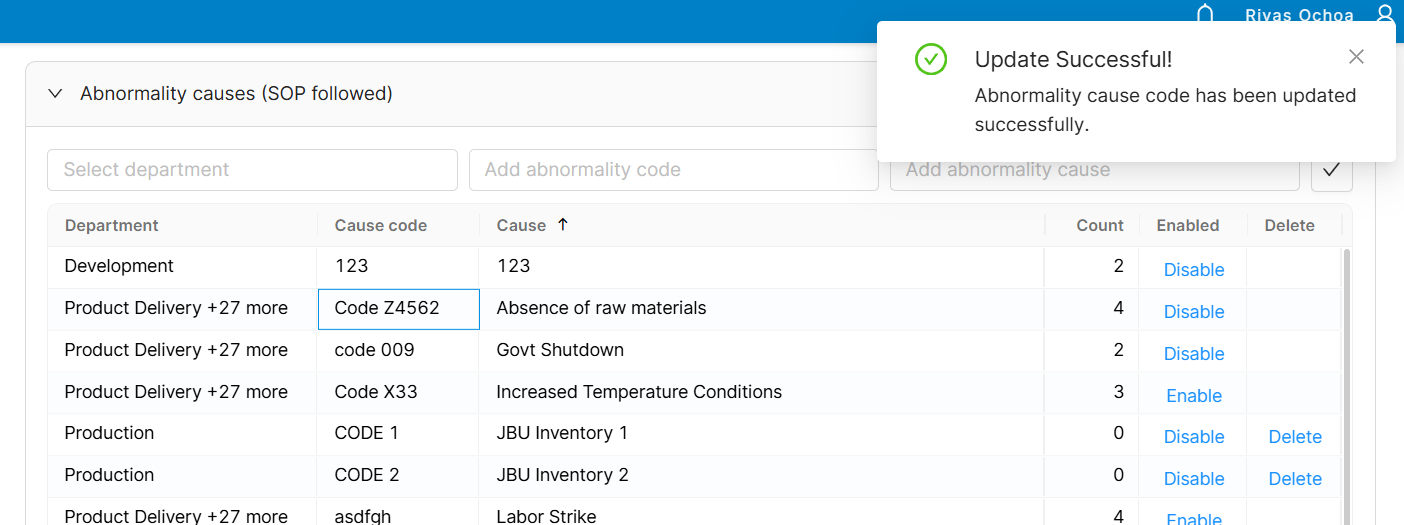
Enable/Disable:
If an Abnormality cause is disabled, it will not be available for future use. However, the existing Analysis/Process Abnormalities will still contain the disabled Abnormality type. If an Abnormality is enabled, then it is displayed while creating Analysis/Process Abnormalities.
Admin can enable/disable the Abnormality type by just clicking against the enable/disable under the enable/disable column
Delete: 4E Admins can also delete an Abnormality cause, by clicking ‘Delete’ under the delete column. However, if the Abnormality cause is already in use, then the delete option is not available
Abnormality cause (SOP not followed)
These are predefined Abnormality cause codes when SOP was not followed and per the JUSE standards.

These causes cannot be managed by the admin. Please contact 4E support for edits in this section
LAST_UPDATED | 25 June 2024 |
|---|---|
LAST_REVIEWED |
